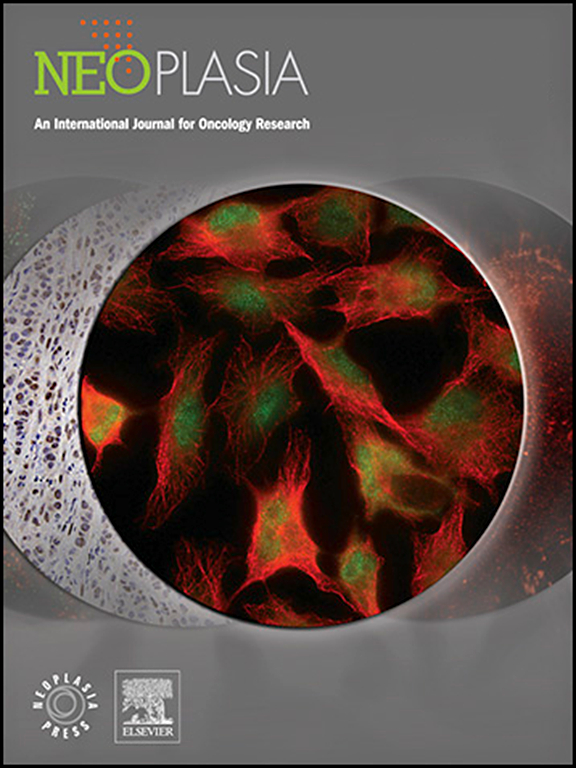SKI regulates rRNA transcription and pericentromeric heterochromatin to ensure centromere integrity and genome stability
IF 7.7
2区 医学
Q1 Biochemistry, Genetics and Molecular Biology
引用次数: 0
Abstract
Accurate chromosome segregation and ribosomal gene expression silencing are essential for maintaining genome integrity, and disruptions in these processes are key for oncogenesis and cancer progression. Here, we demonstrate a novel role for the transcriptional co-repressor SKI in regulating rDNA and pericentromeric heterochromatin (PCH) silencing in human cells. We found that SKI localizes to the rDNA promoter on acrocentric chromosomes and is crucial for maintaining H3K9 trimethylation (H3K9me3) and repressing 45S rRNA gene expression. SKI is also associated with BSR and HSATII satellites within PCH, where is necessary for H3K9 methylation and recruitment of SUV39H1 and HP1α, key players for heterochromatin silencing and centromere function. Consequently, SKI deficiency disrupted centromere integrity and resulted in aberrant chromosome segregation, micronuclei formation, and chromosome instability. The identification of SKI as a key participant in the epigenetic-mediated silencing of pericentromeric and ribosomal DNA provides a fundamental insight, paving the way for new research into the intricate relationship between transcriptional regulation and genome instability during cancer progression, and opening novel opportunities for therapeutic intervention.
SKI调节rRNA转录和着丝粒周围异染色质,以确保着丝粒完整性和基因组稳定性
准确的染色体分离和核糖体基因表达沉默对于维持基因组完整性至关重要,而这些过程的中断是肿瘤发生和癌症进展的关键。在这里,我们证明了转录共抑制因子SKI在调节rDNA和人类细胞中周中心异染色质(PCH)沉默中的新作用。我们发现SKI定位于顶心染色体上的rDNA启动子,对于维持H3K9三甲基化(H3K9me3)和抑制45S rRNA基因表达至关重要。SKI还与PCH内的BSR和HSATII卫星相关,这对于H3K9甲基化和SUV39H1和HP1α的募集是必要的,而SUV39H1和HP1α是异染色质沉默和着丝粒功能的关键参与者。因此,SKI缺陷破坏了着丝粒的完整性,导致染色体分离异常、微核形成和染色体不稳定。SKI作为表观遗传介导的核周围粒和核糖体DNA沉默的关键参与者的鉴定提供了一个基本的见解,为癌症进展过程中转录调控和基因组不稳定性之间复杂关系的新研究铺平了道路,并为治疗干预开辟了新的机会。
本文章由计算机程序翻译,如有差异,请以英文原文为准。
求助全文
约1分钟内获得全文
求助全文
来源期刊

Neoplasia
医学-肿瘤学
CiteScore
9.20
自引率
2.10%
发文量
82
审稿时长
26 days
期刊介绍:
Neoplasia publishes the results of novel investigations in all areas of oncology research. The title Neoplasia was chosen to convey the journal’s breadth, which encompasses the traditional disciplines of cancer research as well as emerging fields and interdisciplinary investigations. Neoplasia is interested in studies describing new molecular and genetic findings relating to the neoplastic phenotype and in laboratory and clinical studies demonstrating creative applications of advances in the basic sciences to risk assessment, prognostic indications, detection, diagnosis, and treatment. In addition to regular Research Reports, Neoplasia also publishes Reviews and Meeting Reports. Neoplasia is committed to ensuring a thorough, fair, and rapid review and publication schedule to further its mission of serving both the scientific and clinical communities by disseminating important data and ideas in cancer research.
 求助内容:
求助内容: 应助结果提醒方式:
应助结果提醒方式:


